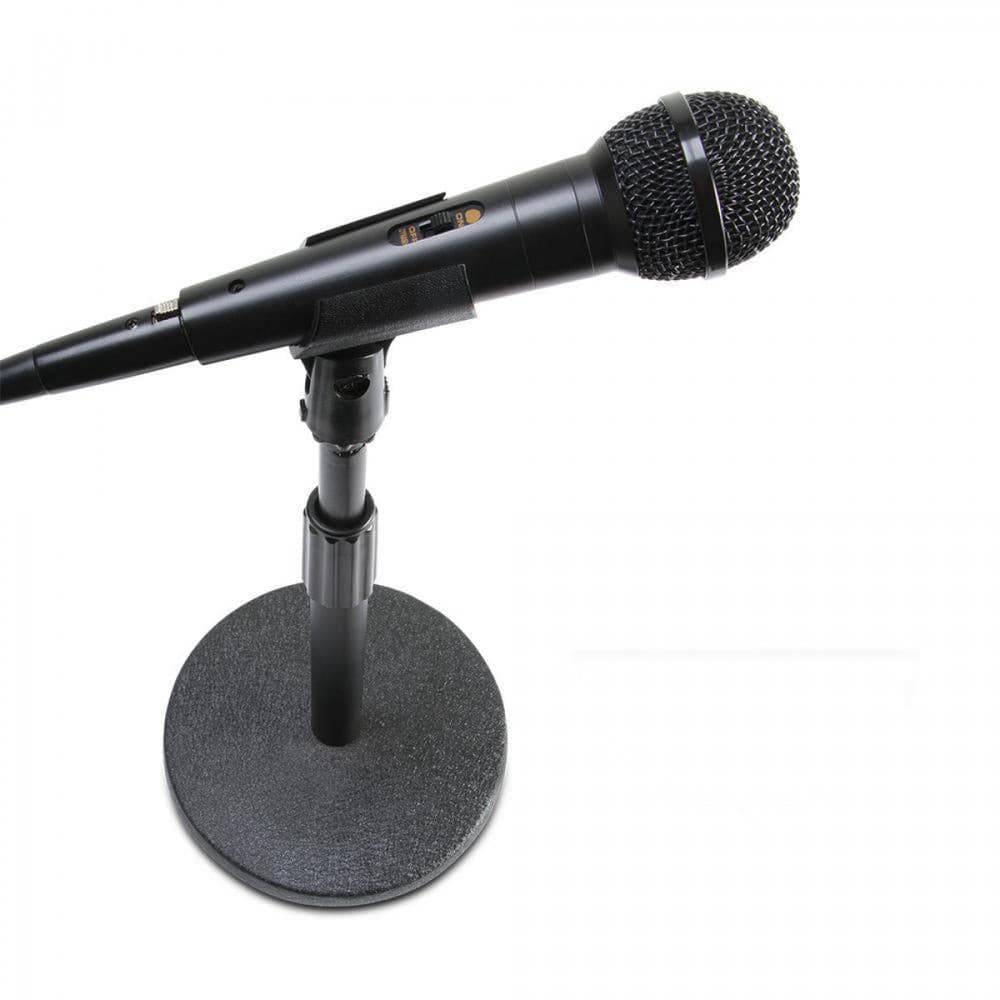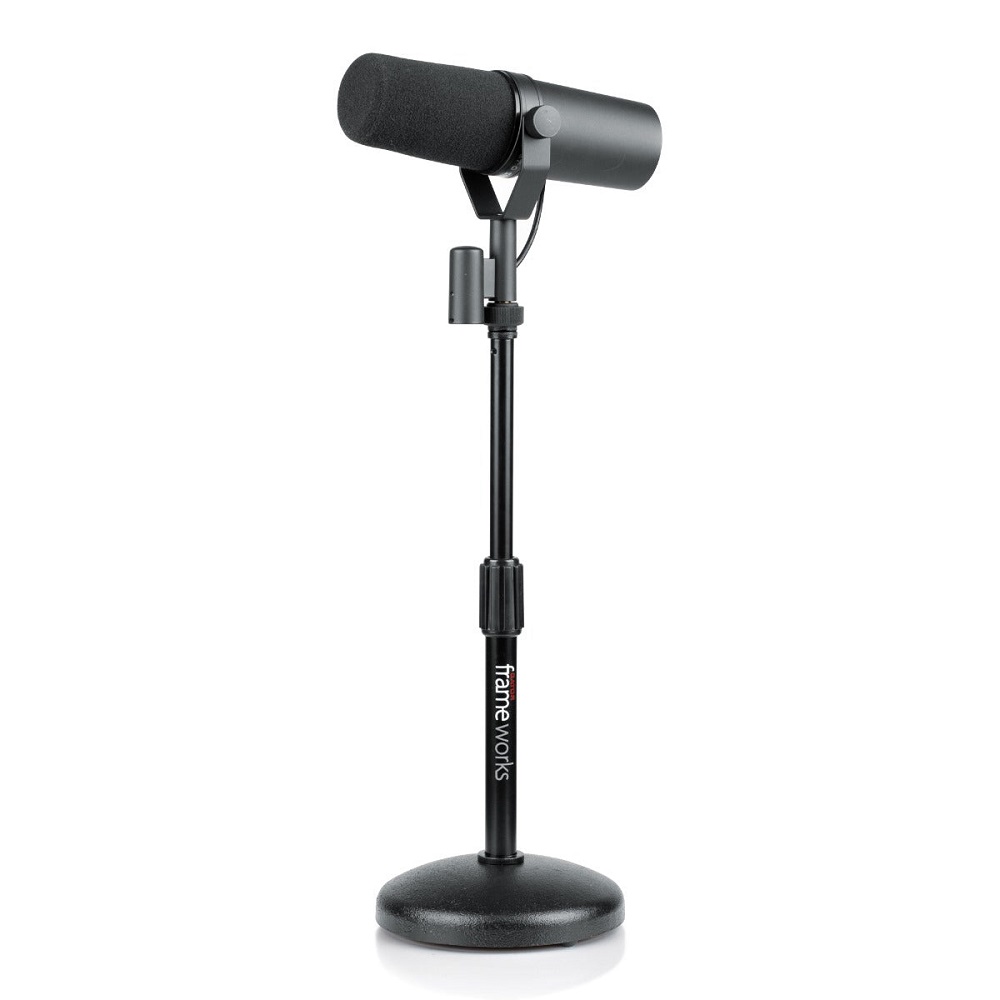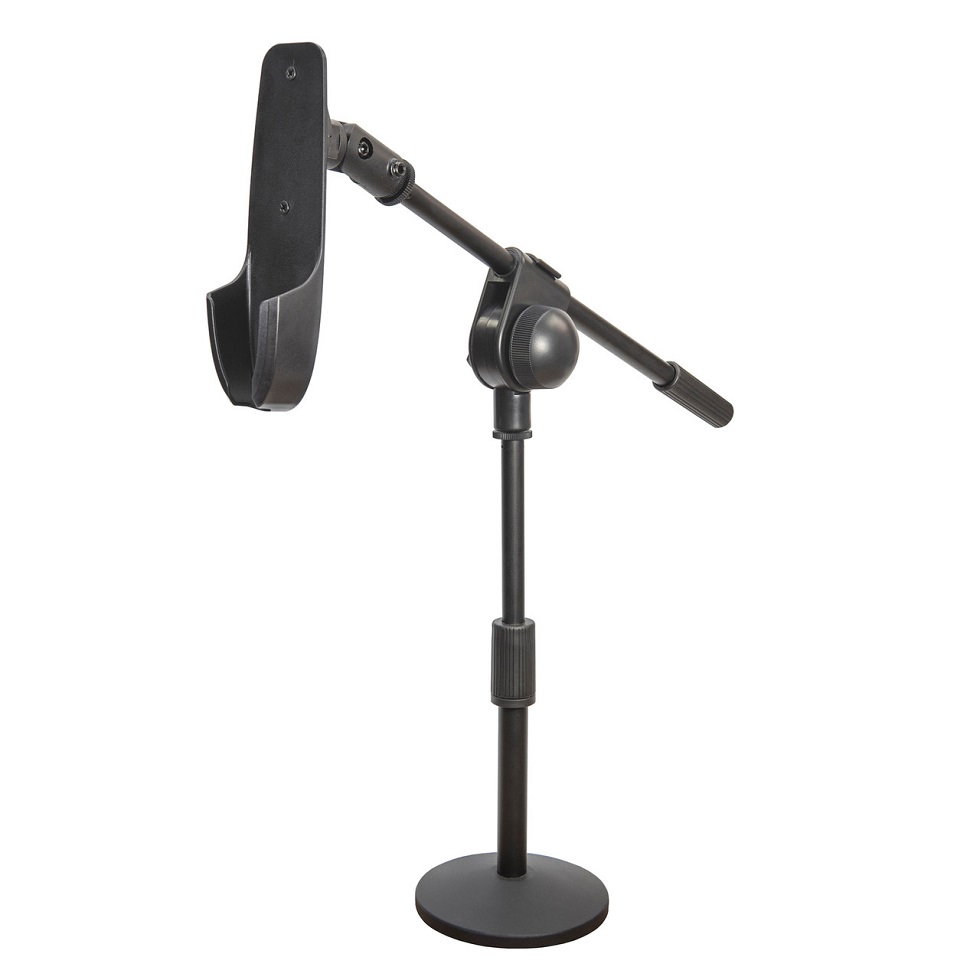Understanding Desk Mic Stands
Desk mic stands are an essential piece of equipment for anyone who uses a microphone regularly. Whether you are a podcaster, a streamer, or a musician, having the right microphone setup is crucial. Desk mic stands hold the microphone in place while you speak, sing, or record. This allows for hands-free use, which enhances comfort and convenience. With many designs and features available, it’s important to find the right desk mic stand that suits your needs.
When considering a desk mic stand, take into account where you will be using it. Will it be on a desk, a table, or even a workstation? The stand’s height, weight, and type of mounting will greatly influence where and how it can be used. Some stands are adjustable while others are fixed. This feature allows users to find their ideal microphone height and angle. In addition, the material of the stand plays a significant role in stability, durability, and appearance.
Another critical aspect to consider is portability. If you plan to move your microphone frequently, a lightweight stand would be ideal. Many mic stands come with collapsible features that make transport easy. In contrast, if you’re setting up an stationary recording space, a heavier, more robust stand may be better suited. It will remain stable, preventing unwanted vibrations and noise while you perform or record.

Types of Desk Mic Stands
Tripod Mic Stands
Tripod mic stands are versatile and popular options for any type of recording setting. They consist of three adjustable legs that provide excellent stability. Most models allow you to adjust the height easily, making them suitable for various seating and standing arrangements. The tripod design also prevents tipping during use, which is essential when your hands might be busy.
These stands often come at an affordable price, which makes them a great choice for beginners. However, their lightweight structure can sometimes feel less stable if you use heavy microphones. If you opt for a tripod stand, ensure it is rated to hold the weight of your microphone. Many tripods offer adjustable height options, allowing you to customize the listening experience according to your needs.
Moreover, tripod mic stands often have threaded adapters making them compatible with a range of microphones. This versatility means you can use one stand for multiple microphones if needed. When not in use, many tripod stands can fold up compactly, which enhances their portability. For those who value convenience and adaptability, tripod stands are an excellent choice.
Boom Arm Stands
Boom arm stands provide an excellent solution for those who need flexibility in microphone placement. These stands usually mount to the edge of a desk, saving space while allowing for extensive movement. The “boom” arm extends outward and can be adjusted to various angles and heights. This feature is particularly useful for streamers and podcasters who wish to keep their microphone positioned closer without taking up desk space.
With a boom arm, you often have the ability to swing the microphone back and forth, providing ease of access during recording sessions. This is particularly helpful if you may need to adjust your position frequently. It also allows for hands-free operation while you focus on your content. Many boom arms also come with cable management options, keeping your recording area neat and tidy.
Despite their many benefits, boom arm stands can be more challenging to install. They usually attach via a clamp on the edge of your desk, requiring some initial setup. While some users might find this daunting, the versatility makes it worth the effort. Also, ensure the desk edge is within the thickness guidelines provided by the manufacturer. With thoughtful placement, a boom arm can greatly improve your recording experience.
Key Features to Look For
Stability
Stability is paramount in any desk mic stand. It ensures that your microphone remains in place, capturing sound precisely as you intend. Without stability, even a slight bump can result in unwanted noise during your recording. Look for mic stands that offer a solid base or weighted design to minimize vibrations. A well-designed stand will also have rubber feet to prevent it from slipping on your desk.
Furthermore, check the stand’s material. Metal stands generally provide more durability and weight compared to plastic options. However, plastic stands may be adequate if you are using a lightweight microphone. Always assess the maximum weight capacity of the stand and match it with your microphone.
You may also want to consider stands with user reviews highlighting their stability factors. Some models may include additional counterweights to bolster stability, which can be an attractive feature for heavier microphones.
Adjustable Height
Height adjustability is another key feature to consider. Many desk mic stands allow you to adjust their height, offering convenience for different recording situations. If you are seated, a shorter stand may be more appropriate. Conversely, if you tend to stand while recording, a taller stand will be necessary.
Some mic stands feature a telescoping design, which makes height adjustments quick and easy. Check that the stand can lock securely in place once you find your desired height. This ensures that you won’t experience any sudden drops or adjustments while you use the mic.
The ability to adjust height not only affects comfort but also sound quality. A microphone positioned at the right height can capture your voice more clearly. It ensures that you are not straining your neck or body to reach your microphone.
Choosing the Right Material
Metal vs. Plastic
The material of your desk mic stand will affect both its durability and stability. Metal stands are generally more long-lasting and stable, suitable for heavier microphones. These stands can absorb vibrations better, minimizing unwanted noise. If you plan to keep your stand in one location, a metal option may be the best.
On the other hand, plastic stands are often lighter and more portable. They are usually less expensive, making them a good option for beginners or those just starting in audio recording. While they may not offer the same level of durability as metal, many modern plastic stands are designed to be strong enough for everyday use.
When selecting a stand based on material, consider your recording environment as well. Heat, humidity, and other factors can influence the longevity of both metal and plastic. Choose a material that best suits your working conditions and personal preferences.
Weight Capacity
Weight capacity is vital for ensuring your microphone stays securely in place. Always check the product specifications to know the maximum weight allowance. If your microphone is heavy, it would be best to select a robust stand designed to handle that weight. Additionally, consider the weight of any accessories you may attach, such as shock mounts or filters.
A stand with a higher weight capacity typically offers better stability. This not only ensures function but also enhances sound quality by reducing vibrations. Understandibly, the last thing you want during a recording session is for your mic to slip or fall.
Maintenance and Care Tips
Regular Cleaning
Maintaining your desk mic stand will prolong its life and ensure optimal performance. Regular cleaning is essential, especially if you live in a dust-prone area. Use a soft, damp cloth to wipe down the stand, removing any dust or grime that accumulates over time. Avoid using harsh chemicals, as they can damage the finish of your stand.
For any moving parts, it’s also wise to ensure that they remain free of dust. Lubrication can help with the smooth operation of adjustable components. Be diligent about giving your stand this occasional maintenance to preserve its functionality.
Proper Storage
When not in use, proper storage is crucial. If your stand is collapsible, fold it up and store it in a dry place to prevent any damage. Avoid placing heavy items on or near it, which could lead to unwanted bends over time. If your stand has any detachable parts, consider storing them altogether to prevent loss.
Additionally, consider the temperature of your storage area. Extreme temperatures can warp or weaken components, so keep your stand in a climate-controlled setting. Properly storing and maintaining your desk mic stand will keep it looking and performing well for years to come.
Cost Considerations
Budget-friendly Options
If you are starting in podcasting or streaming, budget-friendly options may be your best option. Many affordable desk mic stands offer the essentials without breaking the bank. Consider brands that prioritize both quality and cost efficiency. With some research, you can find stands that are highly rated yet budget-friendly.
Affordable stands often come in various styles, allowing you to find something that meets both your budget and your needs. However, be mindful of the stability and durability as you explore cheaper options. Look for user reviews and comparison videos online to help you make an informed decision.
Professional-grade Alternatives
For seasoned professionals, investing in a high-quality mic stand may be worthwhile. These stands typically offer advanced features such as enhanced stability, better materials, and increased weight capacity. While they may carry a higher price tag, think of it as a long-term investment in your sound.
Many professional-grade stands are designed to meet the rigorous demands of studio environments. They offer numerous adjustable features that allow for maximum flexibility. If sound quality and ease of use are your priority, opting for a professional-grade mic stand should be a serious consideration.
Conclusion: A Smart Investment in Your Sound
Desk mic stands are far more than just a tool to hold your microphone. They serve as a foundation for your audio work, promoting better sound quality and enhancing the user experience. As you explore various options, keep in mind the type of recordings you will produce, your budget, and the features that matter most to you.
Regardless of your level of experience, there is a desk mic stand that can help you reach your audio goals. Whether you choose a tripod, a boom arm, or a premium model, investing time in finding the right stand will pay off in better content and improved performance. Your microphone deserves the best, and your desk mic stand plays a critical role in making that a reality.
In summary, whether you are just starting or are an experienced audio producer, the right desk mic stand is a game-changer. With careful consideration of your specific needs, preferences, and budget, you can make a well-informed choice. Your audio equipment setup, complete with a suitable desk mic stand, will significantly enhance your recording experience and unlock your creative potential.


